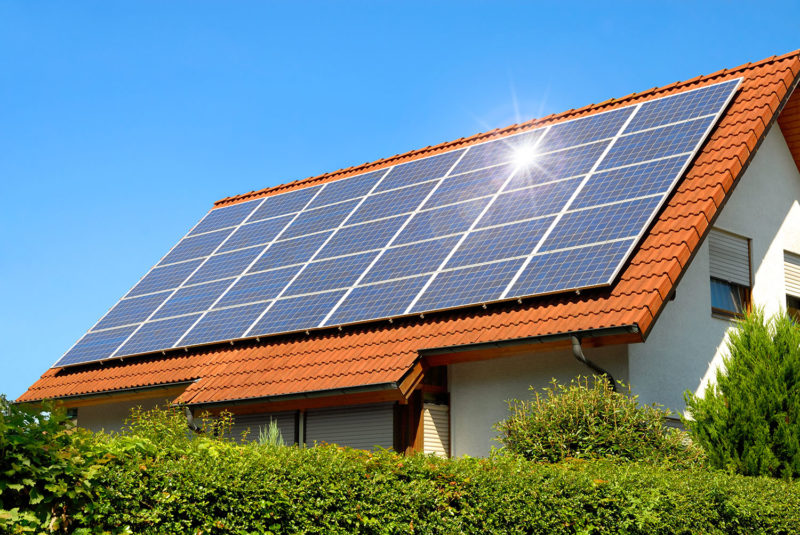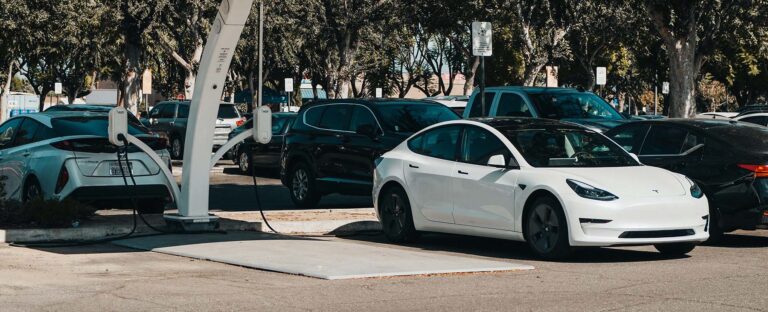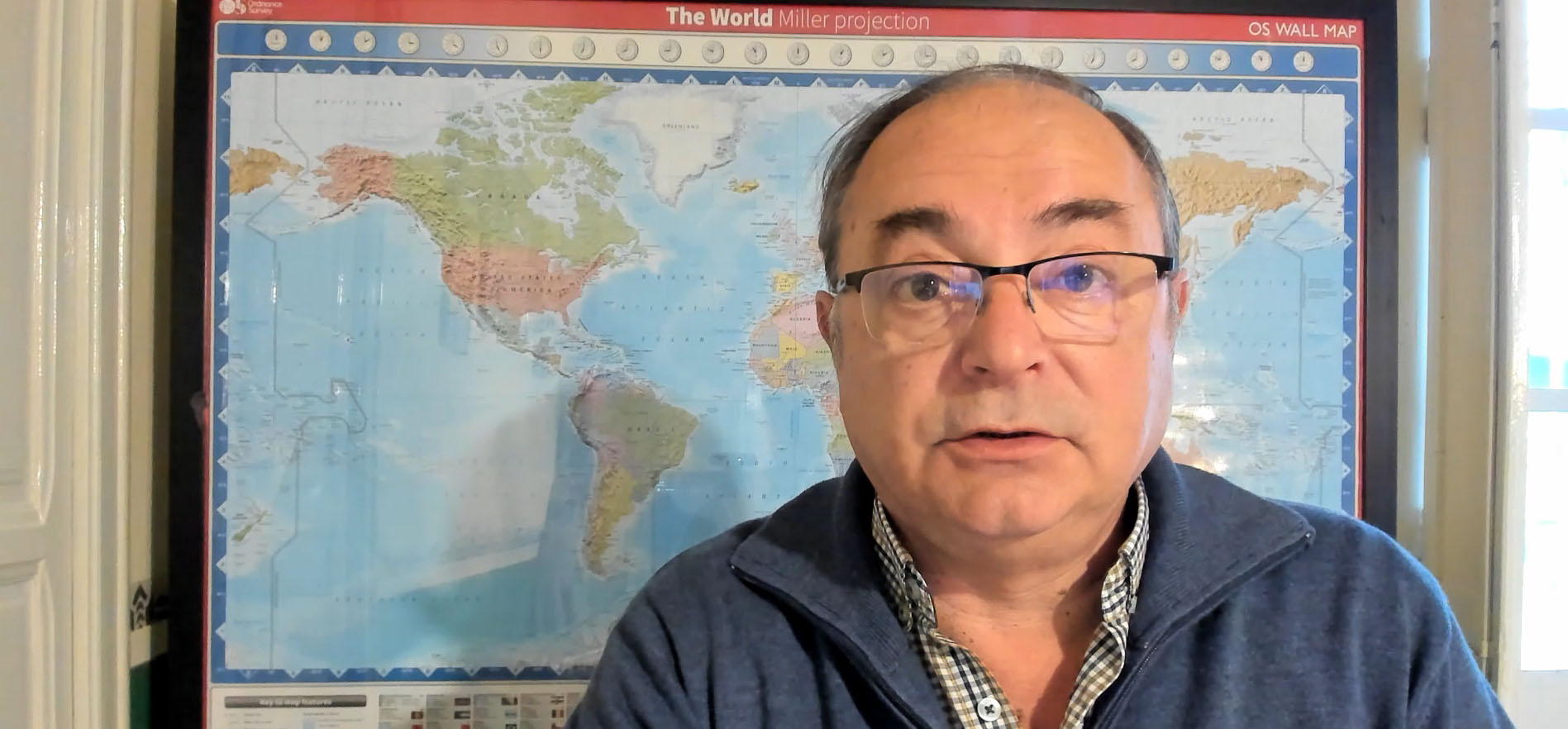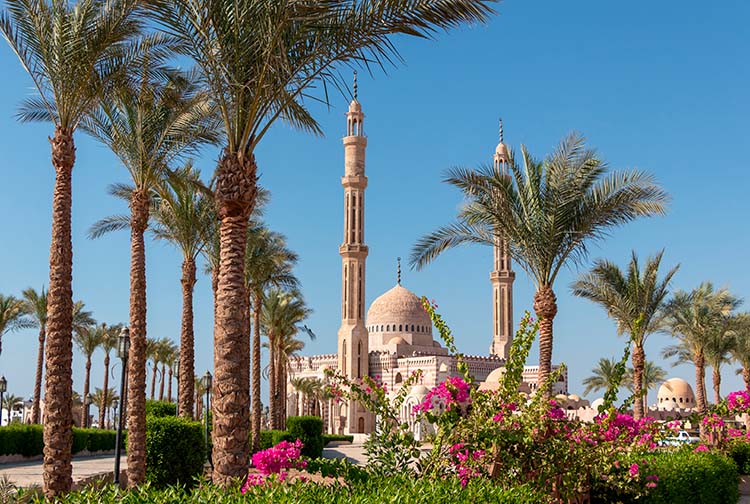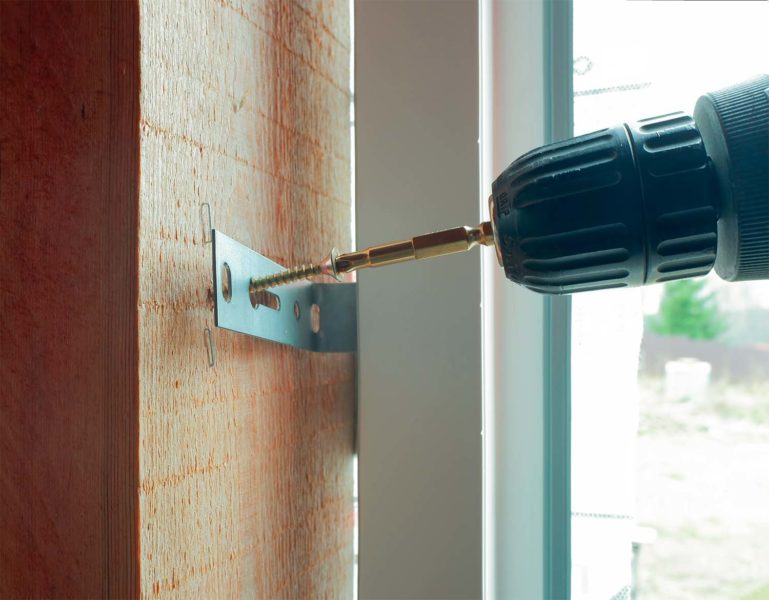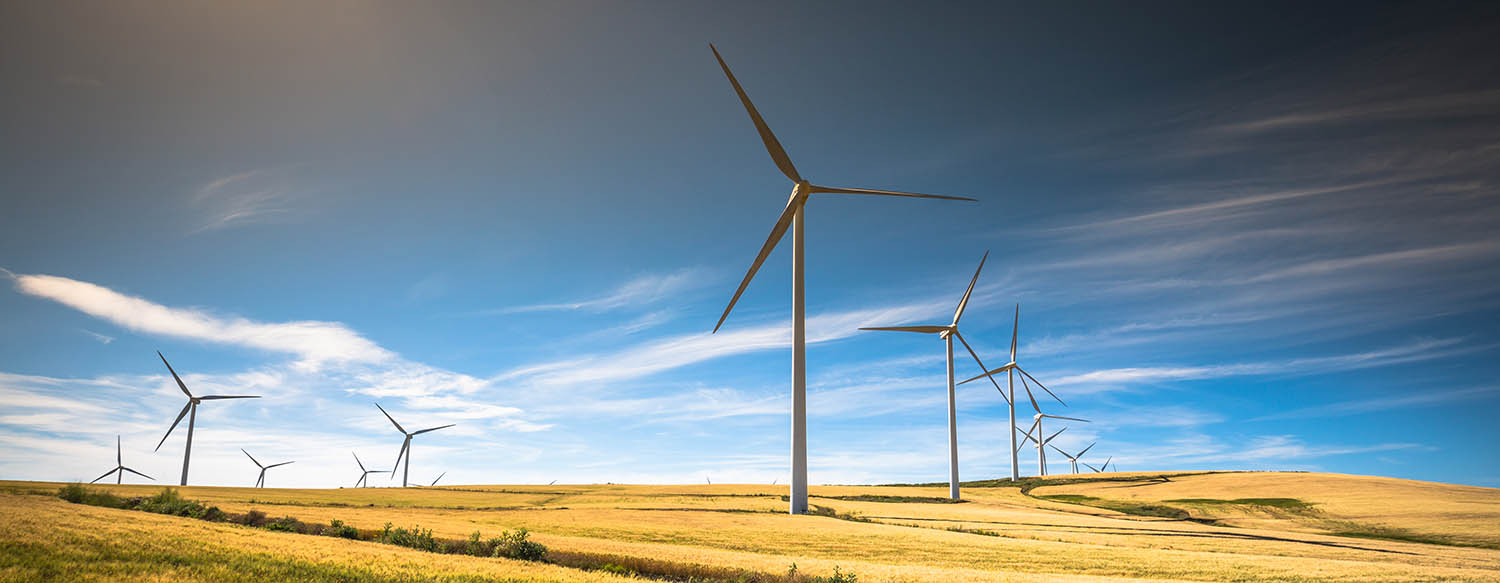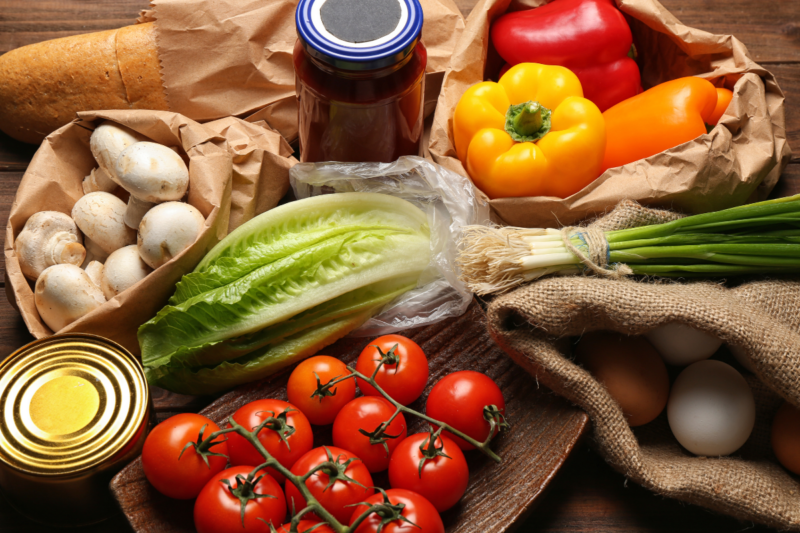Conscious consumption: key to changing the world
Can we change the world? What is our real capacity to impact the environment? Lara de Castro, HR Business Partner at 11Onze, explains what conscious consumption is and how we can contribute to the sustainability of the planet with our daily purchasing decisions.
We often underestimate the impact that our individual actions have on the surrounding environment. But all actions, no matter how small, contribute to shaping the world. Lara de Castro explains it in the following video with a very obvious example.
As she warns, there are many people who think that an individual act is often “too weak” to have a significant impact on the environment, “but this is not the case”. Every action counts and has consequences that can add up to those of the rest of the community. The reality is that “our daily decisions are relevant, no matter how small“. In this sense, the role that all purchasing decisions play if we are conscious consumers is very obvious.
What is conscious consumption?
Conscious consumers are people who choose products and services with criteria that go “beyond value for money,” as they include environmental and social impact as a decisive element in their purchasing habits. One consequence is the commitment to local commerce, which “is a way of supporting local producers and avoiding the economic and environmental impact of transportation,” as Lara de Castro explains.
Another example of conscious consumption can be found in water. If we want to reduce pollution on the planet, we can replace the consumption of bottled water, “with all the drawbacks that we know plastic has,” with tap water treated with sustainable filters.
As Lara de Castro points out at the end of the video, if we all become more conscious “in the small details of everyday life” the reality is that “we can change the world.” The decision is ours.
If you want to discover how to drink the best water, save money and help the planet, go to 11Onze Essentials.
The rise in electricity prices has triggered interest in photovoltaic self-consumption, which has been proven to be the best option to avoid high energy costs. In this episode of La Plaça, we discuss the increase in demand for solar panels with Raúl Rodríguez, Managing Director of the Federation of Installers’ Guilds of Catalonia (FEGICAT).
The growing trend of individuals and businesses generating their own electricity using solar panels has led to a doubling of installed capacity in the last 12 months. This increase in demand has been driven mainly by two factors: on the one hand, the falling costs of photovoltaic technologies and, on the other hand, inflation, which has particularly affected energy prices.
The high interest in installing solar panels, reducing reliance on the traditional electricity supply system, has meant that businesses in the sector are unable to cope with the increased demand. The lack of qualified personnel aggravates the situation, as Rodríguez explains, “the sector is in a position to incorporate, immediately, 18,000 workers”.
Matching supply with labour demand
The challenge of the energy transition and achieving carbon neutrality by 2050, as requested by the European Union, means that in Catalonia “we will need 170,000 workers in the sector”, Rodríguez points out, and continues, “we are talking about minimum salaries of 1,500 euros per month in 14 payments and with an impressive future projection”.
“This is a competitive opportunity for the country, as long as we know how to take advantage of it”, the Managing Director of FEGICAT warns of the need to balance the market with qualified labour, promoting the training of new professionals. An opportunity for the country in which the public administration has to play a fundamental role, in avoiding red tape, promoting training and increasing tax incentives.
11Onze is the community fintech of Catalonia. Open an account by downloading the super app El Canut for Android or iOS and join the revolution!
Car manufacturers are backtracking on electric cars in the wake of slowing global demand, and are extending their scheduled date for ending the production of internal combustion engines. High prices, cutbacks on incentives and a lack of reliable charging points have deterred consumers.
Since February 2023, when the European Union ratified legislation that from 2035 would ban the sale and registration of all vehicles emitting CO₂ emissions, as a central pillar of the European Green Pact, the reality of the electric car market is forcing a change of course that calls into question the strategy established to achieve emission reduction targets.
Electric cars are still selling, but they need to sell in much bigger volumes. The latest report from the European Commission’s Alternative Fuels Observatory (EAFO) shows that electric car penetration in the European Union remains very low. Light-duty vehicles with electric and hybrid engines account for only 6.15% of the total fleet, or around 18 million of the almost 290 million vehicles on the road in Europe.
Moreover, electric vehicle registrations are declining in the European Union as a whole. In the first half of the year, pure electric vehicles accounted for 12.5% of registrations, compared with 12.9% the previous year, according to data from the European Automobile Manufacturers’ Association (ACEA). On the other hand, plug-in hybrid vehicles have lost half a percentage point of market share, from 7.4% in the same period of 2023 to 6.9% this year.
June’s electric car sales data continues this trend, losing 1% of their market share, while registrations of plug-in hybrid vehicles fell to 19.9%. This is a significant slowdown in the electric vehicle market when taking into account that total registrations – electric and combustion vehicles – during this month increased by 4.3%, and by 4.6% for the first six months of the year as a whole, compared to the same period last year.
Sales of electric vehicles have not only fallen across the board in Europe. In Q1 2024, the United States experienced a 7.3% decline in total electric car sales compared to Q4 2023. Only the continued growth of the Chinese car market, which accounts for 60% of global EV sales, is reversing this downward trend.
When the numbers don’t add up
After investing billions of euros in the development of new electric platforms, brands such as Ford, General Motors, Mercedes-Benz, Volkswagen and the Stellantis group have announced that they have experienced a significant drop in electric vehicle orders.
The response from the automotive industry has not been long in coming, and for months now they have been announcing production cuts, factory closures and a rethink of their goals of becoming pure electric vehicle manufacturers by the end of this decade.
In this context, the Volkswagen Group has scrapped the possibility of opening a new plant around Wolfsburg, as planned, and has warned of the possible closure of Audi’s electric car factory in Brussels. Mercedes has cancelled the development of a new electric platform to concentrate its efforts on new, more affordable, combustion-engined vehicles.
But the European industry is playing against the clock – 2035 is the deadline for selling combustion vehicles and, as of today, this ban is still in force. However, the ban faces resistance from several quarters, who question the feasibility and impact of such a measure. MEPs agreed to a derogation until the end of 2035 for manufacturers with small annual production volumes and for the use of synthetic fuels.
Manfred Weber, leader of the European People’s Party (EPP), has called the ban “a mistake” after the European Parliament elections and promised that the party would discuss its repeal “in the coming days”. He is not the only voice among Eurocrats arguing for a less restrictive deal, and ultimately it will be decided in 2027 whether the legislation will be enforced.
From theory to reality
High prices, cut incentives and a lack of reliable recharging points have deterred consumers. The Organisation of Consumers and Users (OCU) points to some of these factors as the main obstacles to the mass adoption of electric vehicles in Spain. According to the organisation, the use of electric vehicles is impractical without a place where they can be recharged daily at an affordable price, either at home or at the workplace.
On the other hand, the exorbitant prices of electric vehicles exclude buyers with lower purchasing power, i.e. the majority of the population in our country and in much of Europe, who demand more affordable vehicles. It is not surprising, therefore, that the Dacia Sandero was the best-selling car in the EU in the first half of the year, to the detriment of the Tesla Model Y, which has fallen from first place in 2023 to eighth this year, with a 26% drop in sales.
Another source of problems for the electric vehicle industry has to do with allegations of planned obsolescence. From batteries that, due to their high cost, are neither repairable nor replaceable, to software updates that give total control to manufacturers to the detriment of independent garages and owners, they limit the lifespan of electric cars, leave users feeling cheated and call into question the green credentials of this type of vehicle.
11Onze is the community fintech of Catalonia. Open an account by downloading the app El Canut for Android or iOS and join the revolution!
A study shows that the benefits of biodiversity are equivalent to twice the global GDP.
No country has achieved the diversity targets set by the Convention on Biological Diversity, with a deadline in 2020. We now face a funding gap of more than $700 billion by 2030, warns the UN Secretary General.
That is why 2021 has to be the year for reconciliation between humanity and nature. So far we have been destroying our planet, we have been abusing it as if we had a spare one, our current resource consumption requires almost two planets, but we only have one. If we compare the history of the earth to a calendar year, we have used one third of those natural resources in the last 0.2 seconds.
Actions such as air, land, and water pollution have provoked a counter-attack by nature that is evident in record temperatures, the collapse of diversity, the spread of deserts and in the numerous and increasingly dangerous extreme events such as fires, floods, and hurricanes.
A planet for biodiversity
Biodiversity or biological diversity is, according to the International Convention on Biological Diversity, the term that refers to the wide variety of living things on Earth and what happens to the natural patterns that shape them. They are the result of billions of years of evolution according to natural processes and also the increasing influence of human activities. Biodiversity also includes the variety of ecosystems and genetic differences within each species that allows the combination of multiple life forms. The mutual interactions with the rest of the environment make the sustainment of life on earth possible.
Biodiversity is an essential basis for our economic well-being. While industrial production is currently one of the main causes of pressure on biodiversity, such as land use, overexploitation or pollution, businesses in all sectors can also be key drivers of biodiversity conservation. All stakeholders now need to work together to integrate the value of biodiversity into our decision-making and develop solutions that harmonise nature and economic growth.
Biodiversity in business
Many companies are not willing to let company growth come at the expense of people and the planet. For this reason, they are changing the way business is done. Internal plans have been carried out to help create a world in which we can all live well within the natural limits of the planet. By using resources to address issues such as health and hygiene, gender equality, climate change and plastic packaging waste, long and short-term benefits to society are being generated.
In 2010 many companies started to be sustainably conscious, the impact that all these changes have made is quite significant: costs and risks have been reduced, and of course, the most important value, to build trust in the consumer.
Danone, for example, is acting against climate change, biodiversity loss and water scarcity. It is reducing its carbon footprint with the aim of achieving zero emissions by 2050. Beyond its production sites, it is working towards these goals in areas where it shares responsibility, especially in agriculture, promoting regenerative agriculture to protect soil, water and biodiversity, promoting animal welfare and empowering a new generation of farmers.
It also has its own policies and tools aimed at promoting biodiversity:
- An example of this is its forestry policy, where it makes a statement of intent to eliminate deforestation from its supply chain and contribute to reforestation.
- Or the fund dedicated to promoting its local ecosystems, the Danone Ecosystem Fund, which supports the company’s projects with a social purpose. This is the case of Renueva, a Danone Aguas waste management and revaluation system which, together with other partners, works to recycle out-of-home consumer packaging, and has a plant in Barcelona Montcada i Reixac.
17 goals to transform the world
The United Nations has created 17 goals to transform our world. The Sustainable Development Goals are the blueprint for a sustainable future for all. They are interrelated and incorporate the global challenges we face every day, such as poverty, inequality, climate, environmental degradation, prosperity, peace, and justice.
In order to leave no one behind, it is important that we achieve each of these goals by 2030:
- End poverty
- Zero hunger
- Health and well-being
- Quality education
- Gender equality
- Clean water and sanitation
- Affordable and clean energy
- Decent work and economic growth
- Industry, innovation, and infrastructure
- Reducing inequalities
- Sustainable cities and communities
- Responsible production and consumption
- Climate action
- Undersea life
- Life of terrestrial ecosystems
- Peace, justice and strong institutions
- Partnerships to achieve their goals
And this is our daily goal and that of business too. There will probably be many companies that will put this into practice anonymously. Other companies will post on their website the development plans and all the changes they have made; some examples are: Cepsa, Decathlon, Ferrovial, San Miguel Mahou, Iberdrola, Unilever, Danone, among others.
Biodiversity is part of progress
We have to demystify the idea that biodiversity is synonymous with increasing costs, but quite the opposite. They go hand in hand together with the economy. Thanks to these gestures and changes, not only will we be able to reduce costs, but we will also have a healthier, more sustainable and better life for future generations.
A documentary not to be missed is “David Attenborough: A Life on our Planet”, in which the renowned naturalist reflects on both the defining moments of his life and the devastating changes he has witnessed. The documentary is available on the Netflix platform and addresses some challenges of life on our planet. He explains how much ground the natural world has lost globally in less than a century, he witnesses the change in nature in his more than 50 years of work, and notes that the world is a unique and spectacular wonder. Moreover, Attenborough sends a message of hope to future generations, revealing the solutions to save our planet from disaster.
We can start with the famous 7 R’s: Recycle, Reuse, Reduce, Redesign, Repair, Renew and Recover. Among all of us, we can achieve it. Do you want to be part of this change?
Do you want to be the first to receive the latest news about 11Onze? Click here to subscribe to our Telegram channel
The number of people living in slave-like conditions has been growing steadily since 2016 and it is no secret that mass production of cheap goods often relies on factories in developing countries where people work in subhuman conditions. So why do we continue to ignore the issue as consumers?
The latest estimates from the Global Slavery Index’s annual report indicate that 50 million people worldwide are victims of modern slavery and that almost 10 million more men, women, girls and boys have been forced into labour or marriage since 2016.
Although modern slavery can take many forms, regarding labour, we refer to it as a condition of exploitation whereby a person, today, is forced to work in subhuman conditions without being able to refuse because of coercion, threats or abuse of power, among others.
Tragedies such as the one in Bangladesh in 2013, when the Rana Plaza building collapsed, killing 1134 people and injuring 2500, or the fire at the school bag factory in Delhi in 2019, where dozens of workers who produced goods and garments for Western clothing brands died, exposed the role of the fashion industry in modern slavery.
It is a secret that has been hidden in plain sight for years. From raw materials to manufacturing to packaging to delivery, modern slavery is embedded in the supply chains of the global garment industry that meets consumer demand in Europe, the United States and other developed economies.
The human cost of fast fashion
The fast fashion business model, initially popularised by large chains such as Zara and H&M and recently joined by other brands such as Shein and Temu, is based on mass production and consumption that increases at the same speed as changing trends. Consumers buy clothes that are fashionable but of low quality and low cost.
The brands that offer this type of articles change their products frequently. To maximise profits, they carry out a policy of offshoring by manufacturing them in developing countries, paying workers low wages and even ignoring shortcomings in terms of safety or working conditions.
This production model is not only very aggressive towards the environment and has led the textile industry to become the second most polluting in the world but entails complex and opaque supply chains, many of them marred by forced labour.
Our responsibility as consumers
Today’s globalised supply chains indeed make it almost impossible to prevent the goods or services we consume from being free from the scourge of exploitation or even slavery. Still, this cannot be an excuse for shirking our responsibility as consumers to inform ourselves about how a product is made, rather than simply choosing the cheapest one.
Cultural relativism or the trivialisation of the concept of slavery can help us to lessen our sense of guilt, but these semantic gymnastics cannot let us forget that, as consumers, we can play an important role in fostering collective awareness through responsible shopping and demanding more concrete actions from big brands to tackle a systemic problem that we have all perpetuated.
11Onze is the community fintech of Catalonia. Open an account by downloading the super app El Canut for Android or iOS and join the revolution!
The increase in extreme weather events is a challenge for governments and the population. What are the economic consequences of climate change? How can we prepare for natural disasters that affect our territory? We talked about it with Gemma Vallet, director of 11Onze District and Carolina Rafales, from the product team.
This year’s summer is expected to be one of the hottest in the historical series, a forecast that seems to be repeated year after year—an early summer marked by unsettled weather and storms. More and more often, meteorologists are warning of a new DANA, better known as a cut-off low, which can cause heavy rainfall for hours or days.
The effects of climate change are increasingly palpable, and we have no choice but to adapt and take the necessary measures to mitigate the economic and social effects that come with these extreme weather events. As Carolina Rafales explains, “These meteorological phenomena can present violent storms and hailstorms, so we must be prepared”.
How to deal with a DANA
This meteorological phenomenon is characterised by torrential rainfall, often violent and accompanied by strong winds, which can cause flooding. The fact that this rainfall occurs in a short time and in very localised areas means that it can cause years of damage to infrastructures and buildings, as it is difficult to channel so much water.
If the region where we live can be affected by a cut-off low, “it is essential to stay informed of the development of the storm and avoid leaving home on foot or by car,” says Rafales.
She also reminds us that “we must make sure that the pipes and drains in our house are free of obstructions”.
Similarly, it would not be a bad idea to be prepared if the electricity goes out, which is one of the negative effects that frequently result from these storms. Rafales advises us to always have our mobile phones charged, or external backup batteries. In cases of extreme flooding, we will have to leave the affected area and seek shelter on higher ground, so it is advisable to have an emergency kit ready, including spare clothes, torches, a radio, a first aid kit and provisions.
If you want to discover fair insurance for your home and for society, check 11Onze Segurs.
The sustainable economy seeks to increase social welfare while promoting sustainable consumption through a financial system based on green businesses. Either through the transformation of existing ones or by creating new businesses. It aims to reduce poverty and ensure quality development for present and future generations, without compromising the health of the planet, i.e. without consuming more than nature generates.
The development of a sustainable economy in any territory involves policies aimed at promoting the use of sustainable energy sources, fostering competitiveness in sustainable activities and investing in innovation and education. According to the 2011 Sustainable Economy Law, we understand sustainable economy as “a pattern of growth that reconciles economic, social and environmental development in a productive and competitive economy, that favours quality jobs, equal opportunities and social cohesion, and that guarantees respect for the environment and the rational use of natural resources in a way that allows needs to be met”.
Why is a sustainable economy necessary?
The advocates of a sustainable economy base their arguments on the environmental forecasts for the coming decades, which, according to experts, are not very positive.m In this sense, the data on the ecological footprint for the future are not very flattering. Those who promote sustainable economy advocate the use of renewable energies such as wind, solar, hydraulic and geothermal energy, to extend the life of the products we consume, second-hand purchases, rental of single-use objects, etc. Preserving the planet’s resources, consuming only seasonal foods, recycling, avoiding plastics, pollution, etc. In this way, the survival of future generations can be guaranteed and, in addition, as it is a model of sustainable development, it is also a model of sustainable development.
But we also have detractors, who are those who feel comfortable or are accustomed to a capitalist economic system, which is the one that currently governs the West, who consider a sustainable economy unrealistic. They believe that it is a production model that is doomed to failure from the outset, due to the inability to supply all the needs of today’s world population.
Characteristics of a sustainable economy
The development of a sustainable economy in any territory involves the development of policies aimed at promoting the use of sustainable energy sources, fostering the competitiveness of green businesses and investing in innovation and development.
Thus, this socioeconomic system is governed by the following fundamental axes:
- Environmental protection: preserving the planet’s biodiversity, minimizing the impact of pollution and fighting against climate change.
- Use of renewable energies: promote the use of alternative sources of energy that do not pollute and minimize the impact on the environment.
- Commitment to efficiency: make the most of the resources we have and take care of scarce resources, such as water, which will allow us to achieve another pillar of economic sustainability, which is efficiency.
- Promoting recycling: establishing a circular economy model in which the waste generated is used to create new products, thus reducing the ecological toll of the current production system.
- Limiting consumption: limiting the use of renewable resources so that they are not used at a higher rate than they are generated. Furthermore, non-renewable resources must be progressively replaced by renewable resources.
- Improve the social standard of living: promote, through education and innovation, equality among people in all territories.
Among the measures that can be implemented by public bodies, we can find the premiums and subsidies to new sustainable economic sectors such as clean energy, or the support to ecological business models. In addition, we must promote the recycling of all kinds of waste, the application of energy efficiency and conservation techniques in all areas of the economy and the promotion of the circular economy as well as new models of more sustainable cities.
The current society is unsustainable, as it consumes resources at a higher rate than nature generates, therefore the relationship between economy and sustainability is very close, if the energy needed for a society comes from resources that are not sustainable, they will become more and more expensive because of their scarcity and that can lead to geopolitical and economic imbalances in the medium and long term.
In Catalonia, and specifically in Manresa, the Ecoviure fair is held every year to show the novelties of a sustainable economy.
This fair was born in 1997 with the intention of serving as a meeting point for people and professionals who, from different fields, work for the environmental, social and economic sustainability of the planet. The fair lasts three days and brings together traders, sustainability technicians, entrepreneurs and government representatives interested in learning about new developments in the green economy.
They can find stands of food products, renewable energies, household products, water treatment or textile products.
There is also an edition for children and families, with the aim of spreading the values of ecology and sustainability, with activities to experiment, play and learn. There are also several workshops and proposals for the youngest children. They need to become aware that we need to move towards a more supportive, fair and respectful society towards the environment.
If you want to wash your clothes without polluting the planet, 11Onze Recommends Natulim.
If you liked this article, we recommend you read:
 Economy
EconomyEcology and economics
4 min readThere is an increasing consensus in our society that accepts that economic growth must respect
The demands of the peasants and farmers, which are part of a European-wide unrest, present the country with a colossal challenge. The one to decide if Catalonia should be food sovereign or if it should renounce its own land. In 11Onze we have it clear: you don’t play with food.
Everyone knows that the primary sector is essential, but it seems that we sometimes forget it. That’s why Catalan farmers, like Europeans, are on a war footing. The demands are simple and could be summed up in one: have some respect for a sector that puts the plate on the table for Catalonia of the 8 million.
Excessive bureaucracy, economic suffocation and regulatory pressure are the battle horses of some farmers who see that the poor conditions in their sector discourage the possible generational change. Nowadays, the peasant is a romantic with a tractor. People who love the land and work for it even if they don’t earn a living. Complaints of having to sell below the cost of production are endemic, and for some time now the lack of protection of farmers against intermediaries, large chains and the importation of products from other countries, which very often do not meet the very demanding regulations that are asked of European farmers and ranchers.
The European greyness
Catalan food sovereignty is in question, in part, due to the European regulatory scourge. The EU, governed from the gray Brussels, pushes its convoluted regulations down. The bureaucratic labyrinth launches itself towards the immediately lower rung of the chain and goes down through the administrations until it falls on its face in front of peasants unable to manage this hellish list. The wisest people in the world, the ones who know how to create food, are asked to also be office workers and collect data and fill in endless forms so that they go up the chain again and satisfy the paperwork thirst of a Brussels bureaucrat.
In December 2022, the farmer and Junts deputy, Salvador Vergés, read in Parliament a list of the measures required of farmers. The clip has gone viral these days as a result of the protests and, if it weren’t for the fact that it deals with such a serious subject, it would make me laugh.
🎙 Ahir, al Parlament, vaig fer una llarga interpel·lació a la Consellera reclamant-li q redueixi la paperassa i la burocràcia q ofega la pagesia. Aquí en teniu un 1r vídeo, on recomano als diputats q s’agafin fort a l’escó x aguantar el ruixat d tràmits d l’exemple q hi explico: pic.twitter.com/2flJLENVa8
— Salvador Vergés i… Tejero! (@vadorverges) December 22, 2022
Drought and priorities
To all the usual problems of the peasantry, this year also added the drought that the whole country is experiencing. The farmers, by decision of the Catalan government, were among the first to receive the blows of the cuts in water consumption. While they had to attend, amazed, a summer tourism campaign without limitations. And they must continue to be surprised, even, seeing the greenery of the golf courses, observing the huge water leaks declared by the ACA and realizing that the water bottling companies are still extracting water from the rivers. Supermarkets are full of plastic bottles filled with water, even though producing plastic bottles pollutes and forces extra water consumption. All to market an essential good that others are denied. Is it normal, then, that the peasants wonder how long the joke will last?
Desolate sovereignty
All this leaves a discouraging picture: that of a country unable to establish and manage its basic priorities. If we are not able to guarantee food production and water, what do we aspire to be? For this reason, the farmers redouble their pressure, although they were already received by the president of the Generalitat, Pere Aragonès. The president often uploads videos on his networks where he is seen cooking recipes. It’s a relaxed way to show off in front of the public, but where do the eggs come from that the Most Honourable uses to make the cake? Where do flour, butter, milk, meat, apples, or artichokes come from? The answer of an urban politician would be simple: from the supermarket.
At a time when it seems that Europe has turned its back on the primary sector to obsess over the war economy, looking at Russia, since 11Onze we want to put ourselves on the side of the peasantry, remembering, once again, the risk of a food crisis that we face.
11Onze is the community fintech of Catalonia. Open an account by downloading the super app El Canut for Android or iOS and join the revolution!
És a l’estiu quan més persones ens apropem al mar i a la muntanya, i inconscientment ens posem novament a prova com a societat pel que fa a la manera de relacionar-nos amb la natura. Analitzar el nostre civisme ens ajudarà a mantenir l’esperit autocrític necessari per créixer en clau personal i col·lectiva. Si la natura ho és tot, el civisme també.
Sigui per pràctiques d’oci o per activitat industrial, a Catalunya en les darreres dècades han desaparegut un 54% d’espècies que viuen en rius i llacs, un 30% en zones agrícoles i prats i un 10% en boscos i matollars. Les conclusions d’aquest estudi, realitzat pel Departament de Territori i Sostenibilitat, assenyalen actuacions humanes com l’alteració dels hàbitats naturals, l’explotació del sòl i el canvi climàtic, però la realitat és que tots podem contribuir-hi si duem a terme comportaments incívics o irrespectuosos en visitar espais naturals.
La petjada de l’ésser humà
Sigui de vacances o passejant pel nostre entorn, segurament tots haurem presenciat comportaments incívics que posen en risc la mateixa natura i, fins i tot, la seguretat de les persones. Ens referim a actituds com fer soroll, embrutar l’entorn, deixar residus, molestar o perjudicar a la fauna, destorbar la tranquil·litat d’altres persones, i especialment dels residents locals, o comportaments de risc com fumar o encendre foc en zones amb risc d’incendi.
El nostre desig, com a turistes, és buscar llocs de tranquil·litat i on gaudir de la natura, però no sempre anirà d’acord amb les intencions de la resta de visitants. I si bé cadascú pot tenir conceptes diferents d’excursió, de pícnic o de tranquil·litat, hi ha límits com els residus o el soroll que travessen la línia del civisme en aquests espais.
Normes de convivència als Parcs Nacionals
En els darrers anys, pràcticament tots els parcs naturals de Catalunya han creat codis de conducta o recomanacions cíviques que tots els visitants han de complir amb un sol objectiu: preservar el territori. És el cas del Parc Nacional d’Aigüestortes i Estany de Sant Maurici, que acull anualment més de mig milió de visitants. Un nombre tan elevat de visitants pot posar en risc la biodiversitat de la zona, i fins i tot la mateixa seguretat dels excursionistes, si no es prenen les mesures correctes. Així doncs, què cal tenir en compte?
Abans de l’excursió
- En primer lloc informar-nos d’on anem, com és la zona, quina temperatura farà o quin recorregut volem seguir. Portar l’equip adequat serà clau per gaudir d’una bona experiència.
- Preparar els àpats en funció de la durada de l’excursió i sempre tenint en compte els residus que podrem generar, ja que els haurem de portar amb nosaltres fins que puguem reciclar-los adequadament.
- Si portem animals, dur-los lligats i cuidar la seva hidratació.
- Si accedim fins al parc amb vehicle propi, respectar els límits de velocitat i sense fer més soroll del compte. A l’hora d’aparcar, procurem fer-ho a les zones habilitades i senyalitzades.
- Utilitzar transport públic per accedir al parc sempre que sigui possible.
Durant l’excursió
- No sortir del recorregut marcat, així evitarem perdre’ns, però sobretot, evitarem trepitjar zones que no estan pensades per a visitants i que poden afectar a la fauna i la flora.
- Mantenir la distància de seguretat, tant entre vianants com entre ciclistes.
- No està permès banyar-se en rius i estanys, ja que tot i semblar-nos una activitat d’allò més natural, la realitat és que pot alterar i contaminar les aigües.
- Menjar a les zones habilitades. I si el recorregut no ho permet, procurar fer-ho sense deixar residus.
- Prohibit encendre foc. Una mesura que s’extrema en certes zones o períodes de sequera, però que és aplicable a totes les zones naturals. Per tant, ni gas combustible, ni encendre cigarretes està permès.
- No endur-nos res que no ens pertoqui. Ni pedres, ni plantes, ni molt menys fer activitats de caça. Si visitem l’espai, és per gaudir-ne tal com és.
Ètica i civisme, una aposta personal
En definitiva, complir els estàndards prèviament descrits no és més que un acte de civisme que, en cas de no sortir d’un mateix, s’haurà de complir per acatar la regulació vigent. Us recomanem llegir “Educar la convivència. La pràctica del civisme” del filòsof Francesc Torralba, un document breu que aprofundeix i ens fa reflexionar sobre la relació entre civisme i ètica.
11Onze és la comunitat fintech de Catalunya. Obre un compte descarregant la super app El Canut per Android o iOS. Uneix-te a la revolució!
Extreme weather events pose the greatest risk to humanity over the next decade, according to the World Economic Forum’s latest Global Risks 2024 Report. Still, misinformation and economic uncertainty are the main concerns in the short term.
The World Economic Forum’s annual Global Risks report analyses the main challenges facing the world two and ten years ahead. It also examines possible partnerships and different approaches to address these global risks.
While preparing the 2024 report, 1,490 experts from academia, business, government, the international community and civil society were surveyed. To complement this data, the Executive Opinion Survey (EOS) of 11,000 business leaders in 113 economies has been added to identify the risks that pose the most serious threat to each country.
A total of 34 global risks are analysed, including technological and economic factors, as well as social and geopolitical risks. A global risk is defined as the possibility of an event or condition occurring that would adversely affect a significant proportion of the world’s GDP, population or natural resources.
Main global risks linked to climate change
Changes related to the climate emergency, such as extreme weather events, loss of biodiversity, collapse of ecosystems or scarcity of natural resources, represent the greatest threat to humanity in the next ten years.
Two-thirds of respondents are concerned about extreme weather events over the next decade, a factor that also ranks second in terms of risk over the next two years. In this case, 5 of the top 10 global risks are related to the environment and climate change.
Among the heads of civil society organisations, Kirsten Schuijt, Director General of WWF International, warned that “unless we take urgent action, the threat will only intensify and bring us closer to inflicting irreversible damage on society and ecosystems”. Indeed, studies show that potentially irreversible changes to the planet could occur by the 2030s if temperatures continue to rise.
Increased risk of disinformation and social polarisation
Disinformation, including that generated by artificial intelligence, and social and political polarisation are second and third in the ranking of concerns. Polarised societies are more likely to rely on information (true or false) that confirms their biases. In the short term, disinformation may affect 4 billion people who will vote in 60 countries in 2024.
The report warns that governments will increasingly be in a position to determine which narrative is considered “the truth”, which could allow political parties to monopolise public discourse and suppress dissenting voices. Disinformation is therefore expected to continue to be used by domestic and foreign actors to widen socio-political divisions.
In this context, social polarisation emerges as one of the main risks that are interconnected with economic recession and lack of opportunities. Moreover, geopolitical tensions and armed conflicts are severely affecting the livelihoods of millions of people, and increase the possibility of war with global consequences.
If you want to discover the best option to protect your savings, enter Preciosos 11Onze. We will help you buy at the best price the safe-haven asset par excellence: physical gold.





